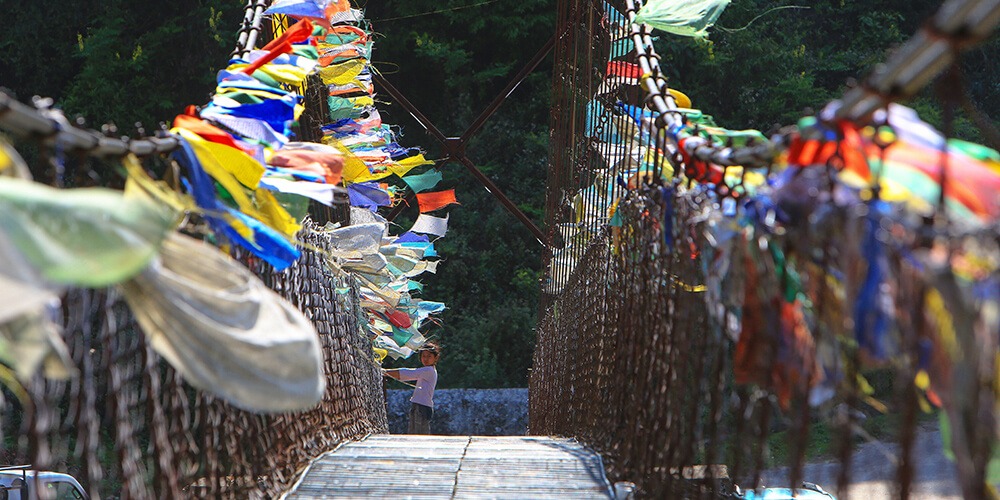AN UNCANNY TOURIST HOTSPOT
The longest suspension bridge in the country that connects the villages of Dzomi and Chubu in Punakha valley sways rapidly in the ferocious wind, and so do the colorful prayer flags that adorn it.

Connecting the two riverbanks, the bridge is secured by thick cables fixed to humongous blocks of concrete. And in the thick of it, as the bridge rocks to and fro violently, are tourists – some holding on to dear life and a few enjoying the scary but thrilling experience.
Undoubtedly, the longest suspension bridge has become a tourist hotspot for thrill seeking visitors and for those eager to try something new, something different. A few, however, throng to the place to marvel at the bridge’s architectural magnificence. And it does help that from the bridge the 360-degree picturesque view of the surrounding valley and the frothing river below is indeed spectacular.
For visitors, the ideal time of day to visit the bridge is in the morning when the weather is cool, the winds haven’t picked up speed, and the crowd is yet to thicken. Once the tourists vans and buses arrive, you can forget enjoying the peace and quiet the spot otherwise offers.
Having said that, if you want to be a spectator and partake as well in all the goings-on then the best time to visit would be in the late afternoons. That’s the time the bridge comes to life with students, locals and tourists alike.
The bridge, according to officials, was built in 1637 by Thangthong Gyalpo, a famous Buddhist master and bridge maker. He was known for building several iron chain bridges across the Himalayan landscape. Over the years, however, the suspension bridge has undergone regular renovations.
Today, the bridge is suspended 60 meters or so above the Phochhu (river) and spans a distance of approximately 180 meters. Most visitors love to take the bridge to reach the Punakha Dzong, a historic fortress and monastery located on the other side of the river. The fortress served as the ancient capital of the country before it was shifted to Thimphu, and is still the winter residence of the Chief Abbot and the central monastic body.
If our guests wish to hoist prayer flags along the rails of the bridge, we, at Orog, will be more than happy to arrange it.
Although the bridge is a structure of fascination for tourists, it is important to note that the suspension bridge was built to help the local communities by connecting the Dzong to the small villages of Shengana, Samdingkha and Sangkha.

